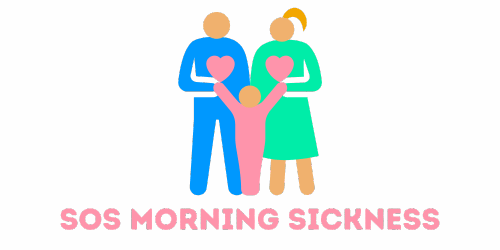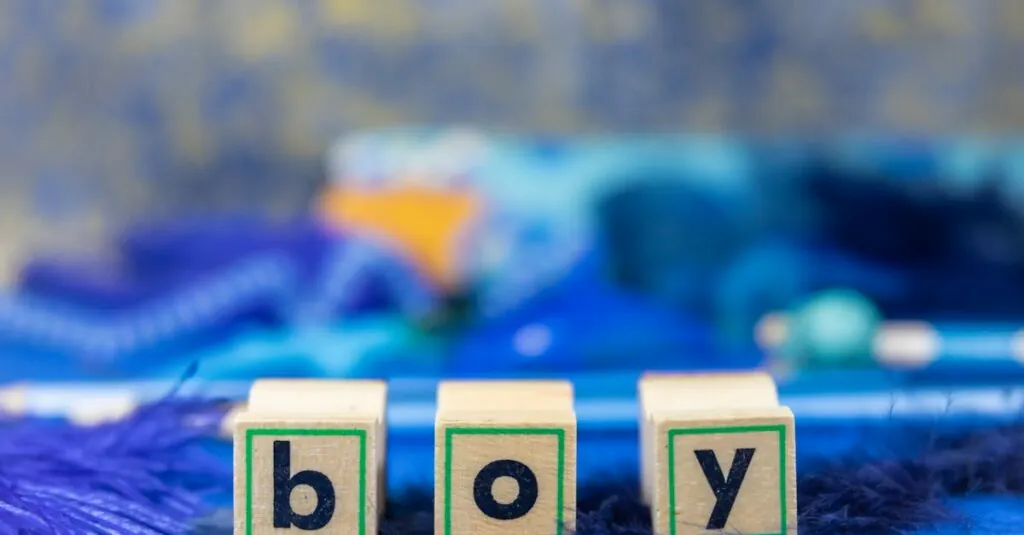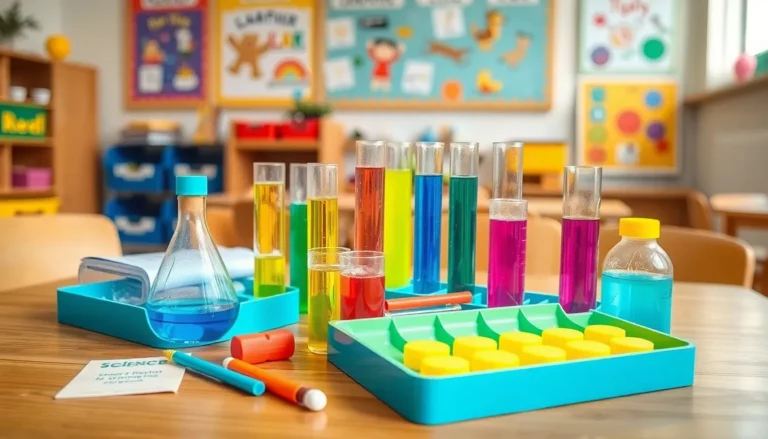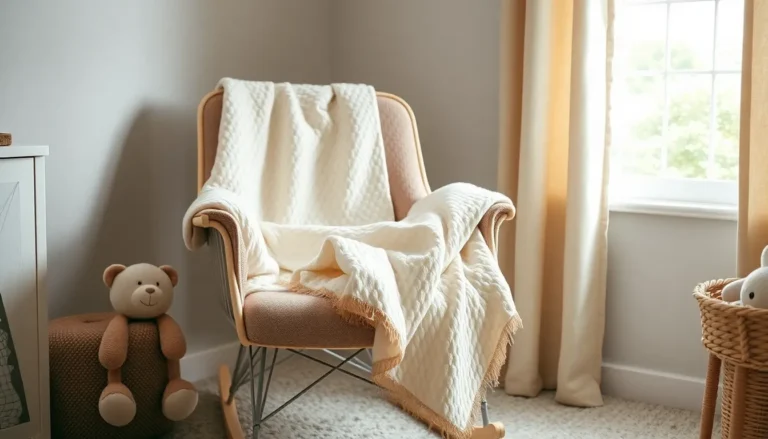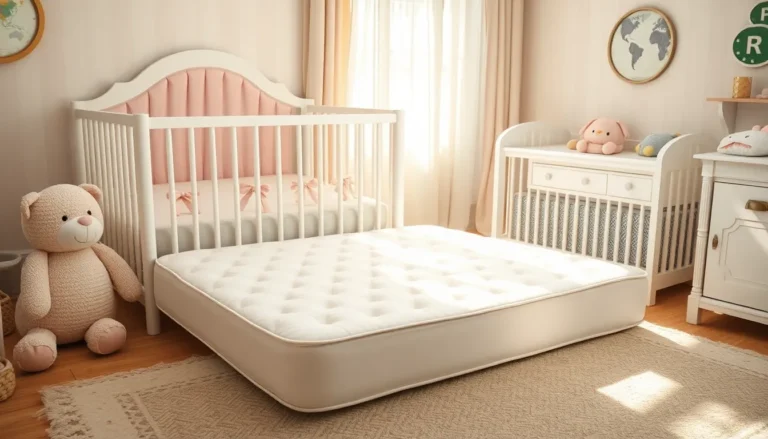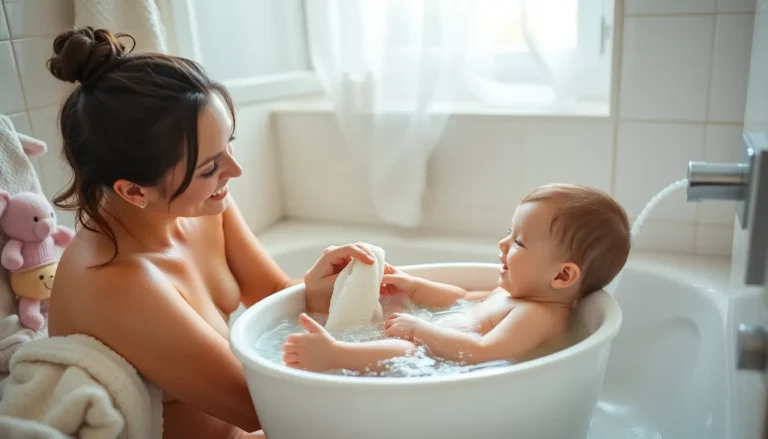Navigating the world of toys for toddlers can feel like a treasure hunt, especially when it comes to finding the perfect educational gems for 2-3 year olds. At this age, little ones are like sponges, soaking up knowledge and skills faster than you can say “learning through play.” Parents want toys that not only entertain but also nurture creativity and curiosity.
Imagine a toy that sparks joy while teaching colors, shapes, and even basic problem-solving. Sounds magical, right? With the right educational toys, parents can transform playtime into a fun-filled adventure that sets the foundation for lifelong learning. So let’s dive into the delightful world of educational toys that’ll have toddlers giggling while they learn—because who said learning can’t be fun?
Table of Contents
ToggleOverview of Educational Toys for 2-3 Year Olds
Educational toys for toddlers aged 2-3 years focus on promoting development through play. They encourage creativity and help cultivate curiosity, aligning with young children’s natural desire to explore.
Numerous types of toys fall into this category, including building blocks, shape sorters, and interactive books. Building blocks enhance fine motor skills while introducing basic concepts like balance and coordination. Shape sorters stimulate cognitive development and teach recognition of colors and shapes.
Vibrant colors and engaging textures attract toddlers’ attention, making learning enjoyable. Toys with musical elements, such as simple instruments, develop listening skills and rhythm. Problem-solving toys, like puzzles, foster critical thinking and persistence.
Parents can find various options tailored to different interests and learning styles. Selecting age-appropriate toys ensures safety and maximizes developmental benefits. Popular choices often include those made from non-toxic materials that are durable and safe for young children.
Additionally, educational toys effectively nurture social skills when used in group play. Sharing toys helps toddlers learn cooperation and communication, essential skills for future interactions. Parents benefit from guiding their child’s learning through play, establishing a foundation for lifelong learning.
Investing in educational toys can significantly impact early development. Engaging in play not only entertains but also lays the groundwork for essential skills. Identifying suitable toys can transform playtime into a valuable learning experience, enriching children’s growth during these formative years.
Benefits of Educational Toys
Educational toys provide numerous advantages for toddlers aged 2-3 years, enhancing their learning and development through play. These toys not only entertain but also promote essential skills crucial during early childhood.
Cognitive Development
Cognitive skills flourish as toddlers engage with educational toys. Toys like puzzles and shape sorters promote critical thinking and problem-solving abilities, tapping into children’s natural curiosity. Engaging with colorful toys introduces concepts of colors and shapes, fostering cognitive recognition. These experiences inspire creativity and imagination, essential components of cognitive growth. Reading interactive books teaches language skills and comprehension naturally. By exploring various ideas and challenges, children develop reasoning capabilities and cognitive readiness for future learning.
Motor Skills Enhancement
Motor skills improve as toddlers play with educational toys designed for developing coordination. Building blocks and stacking toys enhance fine motor skills while encouraging creative construction. Grasping small pieces helps develop grip strength, vital for writing and self-care tasks later. Interactive toys with buttons and levers sharpen hand-eye coordination, making connections between movement and action clearer. As children manipulate these toys, they gain confidence and dexterity, necessary for daily activities. Overall, play with educational toys leads to significant advancements in physical development, supporting lifelong learning through active engagement.
Types of Educational Toys
A variety of educational toys exist for toddlers aged 2-3 years, each designed to enhance specific developmental skills. These toys promote learning while ensuring playtime remains engaging.
Building Blocks
Building blocks serve as a classic educational toy. They stimulate creativity and problem-solving, enabling toddlers to experiment with balance and structural design. Various sizes and shapes encourage exploration of spatial awareness. Additionally, stacking blocks fosters fine motor skills and hand-eye coordination. Engaging with these blocks also allows children to practice numbers and letters through playful learning. Colorful sets catch attention, making the activity visually stimulating. Parents appreciate how these toys inspire independent play and shared experiences with peers.
Musical Instruments
Musical instruments can transform playtime into a melodic learning opportunity. They introduce toddlers to basic rhythms and tones, enhancing auditory skills through sound exploration. Instruments like tambourines, xylophones, and maracas encourage movement, creating a fun environment while developing coordination. Engaging with music also nurtures emotional expression and social skills during group play. Parents recognize the value in fostering creativity and appreciation for music early on. Vibrant colors of these instruments attract attention, ensuring children remain involved and entertained.
Puzzles
Puzzles offer a hands-on approach to cognitive development. They challenge toddlers to think critically as they piece together shapes and images. Simple, age-appropriate puzzles improve problem-solving skills while teaching spatial reasoning. Each completed puzzle provides a sense of achievement, boosting confidence and persistence. Engaging with puzzles also enhances fine motor skills as toddlers grasp pieces and place them accurately. Various themes and images make these toys versatile, appealing to different interests. Parents value puzzles for their ability to promote independent and cooperative play, cultivating interaction among peers.
Safety Considerations
Safety is crucial when selecting educational toys for toddlers aged 2-3 years. Parents must prioritize materials that are suitable for their child’s age and developmental stage.
Age-Appropriate Materials
Choosing toys made from safe, non-toxic materials ensures children play without risk. Look for products certified to meet safety standards set by authorities like the Consumer Product Safety Commission. Natural materials such as wood can offer durability and safety. Soft, plush toys provide comfort and prevent injuries, while plastic toys should be free from harmful chemicals like BPA. Always check for labels that indicate age suitability to maximize safety.
Avoiding Small Parts
Toys with small parts pose choking hazards for toddlers. Avoid toys containing pieces smaller than 1.75 inches in diameter, as they pose significant risks. Opt for larger, sturdier components that are easy for small hands to grasp. Select toys designed for older children only when parental supervision is available. Periodically inspect toys for wear and tear, replacing them as needed to maintain safety during play. By avoiding small parts, parents can foster a safe learning environment while encouraging exploration and fun.
Top Recommended Educational Toys
Parents looking for educational toys for 2-3 year olds will find an array of excellent options available. Building blocks serve as a versatile choice that stimulates creativity while refining fine motor skills. Shape sorters promote cognitive development along with problem-solving abilities, as toddlers learn to fit shapes into corresponding openings.
Interactive books, rich with textures and colors, enhance language skills and comprehension, engaging toddlers in a fun narrative experience. Musical instruments such as xylophones and maracas introduce rhythm and sound, fostering auditory development and emotional expression through play.
Puzzles provide another great option. They enhance critical thinking and boost hand-eye coordination, encouraging both independent exploration and collaborative play. Stacking toys, featuring various shapes and sizes, promote spatial awareness while developing grip strength.
Parents should consider safety when selecting these toys. Age-appropriate toys made from non-toxic materials are vital, ensuring they meet established safety standards. Toys with small parts pose choking hazards and should be avoided. Opting for larger, sturdier designs promotes both safety and ease of handling for little hands.
Regularly inspecting toys for wear and tear is crucial for maintaining a secure play environment. By prioritizing safety and developmental benefits, parents transform playtime into a valuable learning experience that supports their child’s growth during these formative years. Investing in high-quality educational toys creates a foundation for lifelong learning while nurturing curiosity and creativity.
Selecting the right educational toys for toddlers aged 2-3 years is vital for their development. These toys not only engage young minds but also lay the groundwork for essential skills. By choosing toys that promote creativity and critical thinking, parents can enhance their child’s cognitive and physical growth.
Safety should always be a priority when selecting toys. Non-toxic materials and age-appropriate designs ensure a secure play environment. Investing in high-quality educational toys transforms playtime into a meaningful learning experience, fostering curiosity and a love for exploration. With the right choices, parents can support their child’s journey toward lifelong learning and development.
